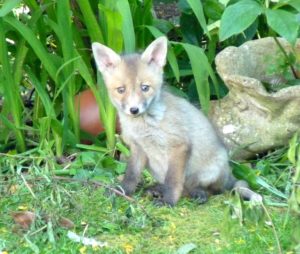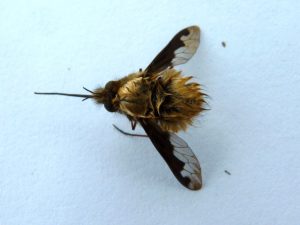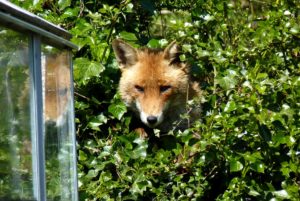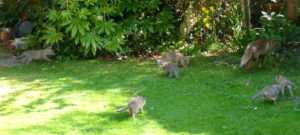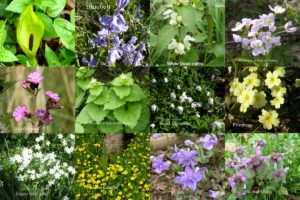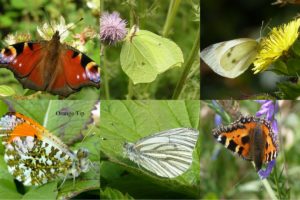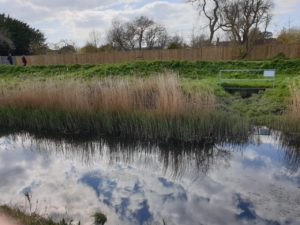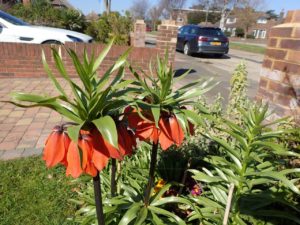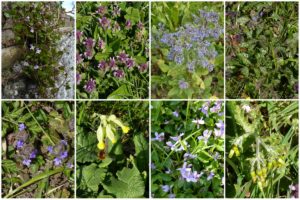Butterflies: the early blues are Holly Blue and there are now Comma,
Peacock and Red Admiral, Green-veined Whites as well as Small White, Brimstones and lots of Orange Tips.
Look out for Bee Flies – they have a characteristic long pointed proboscis which is not only used for gathering nectar but also as an ovipositor into a host mining bee which it parasitises. Also keep an eye out for bright red Lilly Beetles.
If you want to help bees, why not 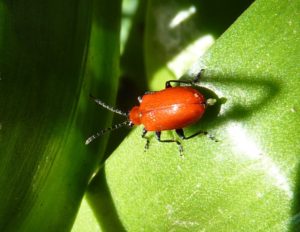 make a home-made Bee Hotel (see
make a home-made Bee Hotel (see
photo) and this is the perfect time to leave part of your lawn unmown to
make a mini-meadow.
There is a litter of 6 fox cubs nearby from a den under a shed is a nearby garden. The father helps feed the cubs while the mother keeps mainly in the den.
Clive Hall has reported a few 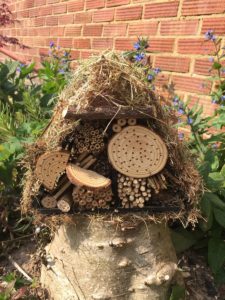 mornings of passage migration over the
mornings of passage migration over the
sea: Sandwich and Commic Terns, Common Scoter, Med. Gulls, Brent Geese,
Whimbrel, Arctic Skua, Kittiwake, Bar-tailed Godwit.
Common Whitethroat are back on the Rife but only a few Willow Warblers
heard. On Highdown,and especially up McIntyre’s Lane there are pairs of
Linnets, Common Whitethroat. Lesser Whitethroat, Blackcap, Chiffchaff
and lots of Skylarks.